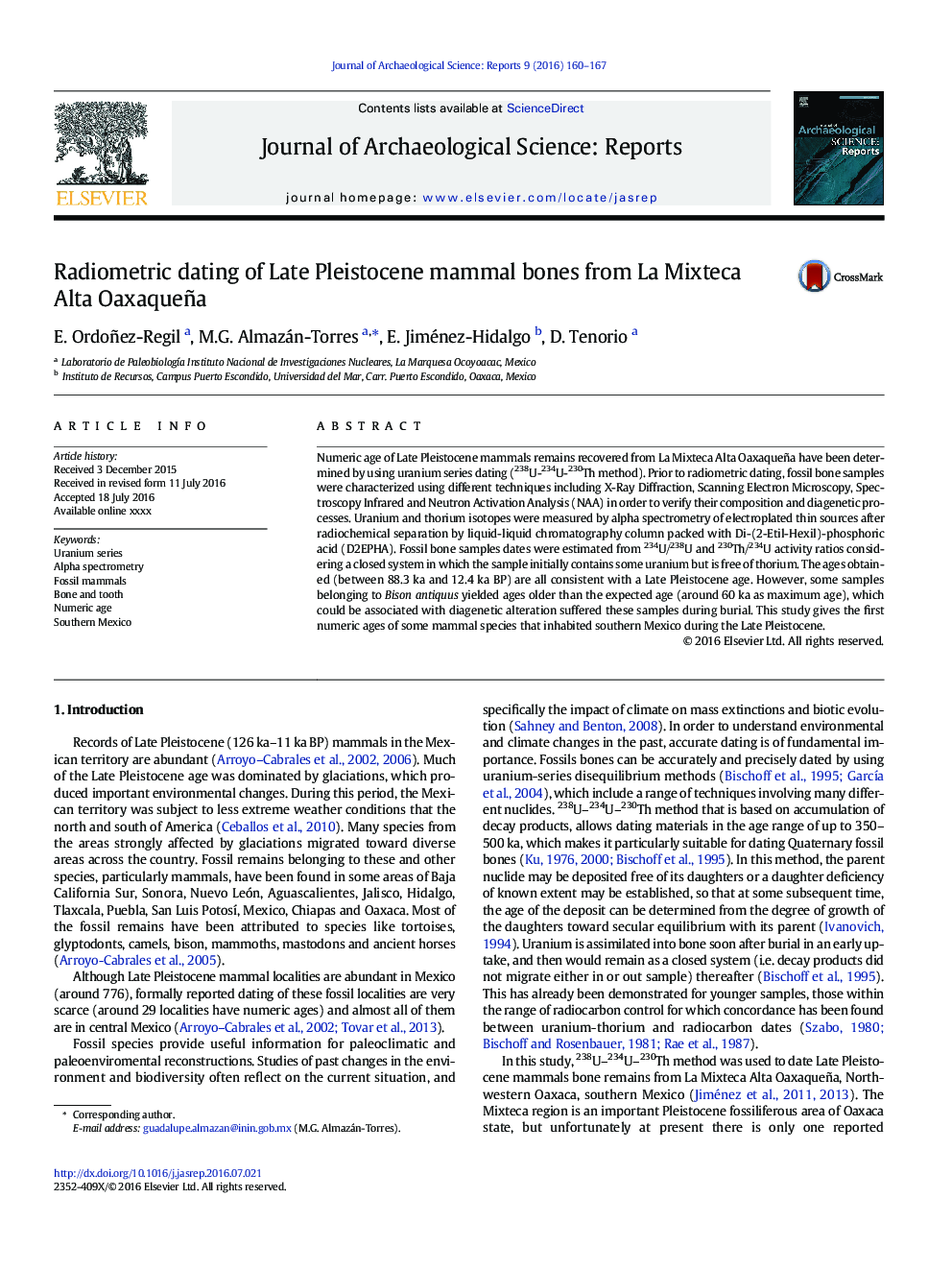| Article ID | Journal | Published Year | Pages | File Type |
|---|---|---|---|---|
| 7445334 | Journal of Archaeological Science: Reports | 2016 | 8 Pages |
Abstract
Numeric age of Late Pleistocene mammals remains recovered from La Mixteca Alta Oaxaqueña have been determined by using uranium series dating (238U-234U-230Th method). Prior to radiometric dating, fossil bone samples were characterized using different techniques including X-Ray Diffraction, Scanning Electron Microscopy, Spectroscopy Infrared and Neutron Activation Analysis (NAA) in order to verify their composition and diagenetic processes. Uranium and thorium isotopes were measured by alpha spectrometry of electroplated thin sources after radiochemical separation by liquid-liquid chromatography column packed with Di-(2-Etil-Hexil)-phosphoric acid (D2EPHA). Fossil bone samples dates were estimated from 234U/238U and 230Th/234U activity ratios considering a closed system in which the sample initially contains some uranium but is free of thorium. The ages obtained (between 88.3Â ka and 12.4Â ka BP) are all consistent with a Late Pleistocene age. However, some samples belonging to Bison antiquus yielded ages older than the expected age (around 60Â ka as maximum age), which could be associated with diagenetic alteration suffered these samples during burial. This study gives the first numeric ages of some mammal species that inhabited southern Mexico during the Late Pleistocene.
Related Topics
Social Sciences and Humanities
Arts and Humanities
History
Authors
E. Ordoñez-Regil, M.G. Almazán-Torres, E. Jiménez-Hidalgo, D. Tenorio,
